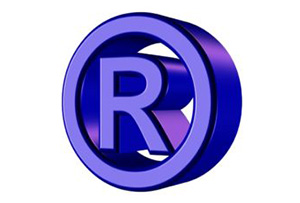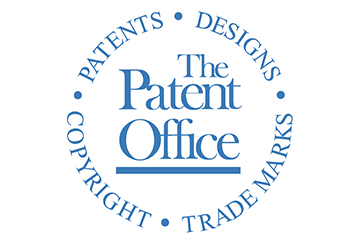RECENTLY PROPOSED FEDERAL LEGISLATIVE PATENT LAW BILLS STRONGER PATENTS ACT OF 2019
In 2019 Congress proposed The STRONGER Patents Act of 2019 (“STRONGER Act”)[1], which intended to take the existing patent law framework and reform it through legislation rather than the judiciary. This article discusses the STRONGER Act’s proposed intended changes and the reasoning for implementing those changes.
By way of background, the United States patent laws transformed following the 2011 passage of America Invents Act (“AIA”). Most AIA provisions took effect on March 16, 2013. The AIA changed the priority date of a patent application filed with the United States Patent and Trademark Office (“USPTO”) from the “date of invention” to the “date of filing,” added additional challenges to post-issue patent validity challenges, and changed numerous rules related to litigation of granted patents. However, since the passage of the AIA, there’s been much uncertainty surrounding numerous issues pertaining to injunctive relief and challenging the validity of granted patents.
Specifically, there are currently several ways of challenging an issued patent in the United States. An inter partes review (“IPR”) is a procedure for a third party to challenge the validity of a United States patent similar to litigation proceedings. A post-grant review (“PGR”) is a trial proceeding where the patentability of one or more claims in a patent is reviewed when third-party files a petition within nine months of a patent being granted or reissued. A reexamination proceeding is a process whereby anyone, either a third party or inventor, may have a U.S. patent reexamined by a patent examiner at the USPTO to verify that the subject matter it claims is patentable.
In response to perceived ambiguities in the AIA, Congress has introduced two different bicameral and bipartisan legislative bills proposals in 2019: (1) on April 17, 2019, Senators Thom Tillis (R-NC) and Senators Chris Coons (D-Del.), along with Representatives Doug Collins (D-Georgia), Hank Johnson (D-Georgia), and Steve Stivers (R-Ohio), released a “bipartisan, bicameral framework” for legislative Section 101 reform; and (2) on May 22, 2019, following feedback on their first draft framework, the same group of congressional members released a “draft bill” to reform Section 101, known as the STRONGER (“Support Technology and Research for Our Nation’s Growth and Economic Resilience”) Patents Act of 2019 (House and Senate identical bills pending; H.R. 3666 and S. 2082).
The STRONGER Act set out to address the following issues: (1) providing for injunctive relief against infringers; (2) making post-grant PTAB proceedings “fairer and more efficient for all parties;” and (3) address the problem of repetitive, harassing petitions at the PTAB. We discuss these issues in detail below.
- The STRONGER Act is intended to increase the likelihood of inventors obtaining an injunction (a judicial order stopping a proven infringer from continuing to use or sell an invention)
The STRONGER Act is intended to increase the likelihood of inventors obtaining an injunction (a judicial order stopping a proven patent infringer from continuing to use or sell an invention). The proponents of the STRONGER Act claim that the proposed STRONGER Act is required since the Supreme Court’s 2006 eBay v. MercExchange, 547 U.S. 388 (2006) decision caused the rate of injunctions granted to decrease significantly and without reason from the pre-eBay rate of granted injunctions. Additionally, many scholars believe that many lower courts misapplied the eBay decision as a categorical rule against injunctions for inventors who license their patents. Thus, given the difficulty of obtaining injunctions, many individual inventors and small businesses are left with little recourse in the face of infringement by large corporations. Proponents of the STRONGER Act claim that the STRONGER Act addresses this issue.
- The STRONGER Act is intended to address the potential for inconsistent rulings between district court cases and post-grant Patent Trial and Appeal Board (PTAB) proceedings.
Proponents of the STRONGER Act claim that the STRONGER Act is intended to address the potential for inconsistent rulings between district court cases and PTAB proceedings. The STRONGER Act aims to achieve this by expressing a preference for district court rulings and by requiring IPRs and PGRs to apply the same standards for claim construction determinations that are used in the district court. Claim construction is a legal term (used mostly in litigation) that refers to the exact meaning and scope that is to be applied to a claim and to each word in the claim. Expressing a preference for district court rulings is already the case by USPTO regulation concerning claim construction. However, with the passage of the STRONGER Act, the expressed preference for district court rulings would be codified into statutory law, and thus would not be subject to change by the USPTO.
- The STRONGER Act is intended to limit repetitive and “harassing” challenges against inventors between patent holders’ and challengers’ interests in PTAB proceedings.
The STRONGER Act is intended to limit repetitive and harassing challenges against inventors between patent holders’ and challengers’ interests in PTAB proceedings. Statistics demonstrate that the PTAB process has been abused by large corporations who have initiated repeated PTAB challenges against valid patents in ways not intended by Congress or tolerated in district court. The AIA intended to provide patent owners a less costly and faster mechanism to challenge the validity of patents at the PTAB – not provide for a more relaxed venue with lax regulations. In fact, in practice, statistics demonstrate that it has been easier to invalidate patents in the PTAB than in district court. This issue demonstrates that both the legislative and judiciary are struggling with the subject-matter eligibility requirement, commonly known as Section 101 of the AIA.
Given the current patent law landscape involving complicated judicial decisions and legislative proposals, you should seek the advice of an experienced patent attorney, so that you can better navigate the rigors of patent law. Derek Fahey and William Furlow co-authored this article. You can learn more about Derek Fahey by clicking HERE.
[1] https://www.congress.gov/bill/116th-congress/house-bill/3666/text












